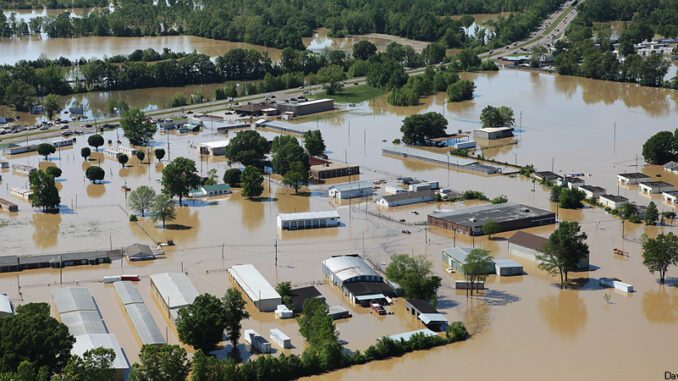
Pfizer Vaccine Now FDA Approved

Although Americans have been receiving COVID vaccinations since early Spring, it was only last week that the Pfizer vaccine was fully approved by the Food and Drug Administration (FDA). Because of the urgency of the pandemic, the FDA granted emergency use authorization. It is important to know, however, that the vaccines received careful and rigorous testing to even qualify for emergency use authorization. Now, however, this vaccine has been fully approved. According to Pfizer, the vaccine is more than ninety percent effective in preventing COVID-19.
Full FDA approval makes it easier to convince people who have been worried about taking the vaccine. According to a recent poll, nearly one-third of people who haven’t been vaccinated yet said they would do so once the vaccine is fully approved. It is also now an option for some organizations such as the U.S. military to require vaccination. This was not a legal option when the vaccine had not been fully approved.
While Pfizer is the most common vaccine distributed in this country, many Americans have received the Moderna or Johnson & Johnson vaccines instead. FDA approval for those is still being completed. This FDA approval only applies for people 16 and over. If you are between 12 and 15, you can still get the shot under the same emergency authorization that existed before now.
Dig Deeper Approving a vaccine also means that it gets an official brand name. So from now on, the Pfizer vaccine will be known as “Comirnaty.” What is the meaning of the name? Use Internet resources to help you figure it out.
Remembering Hung Liu
Are you familiar with the artist Hung Liu? She passed away on August 7, 2021, from pancreatic cancer at the age of 73. But her career was long and prolific. She is known for painting portraits of Chinese peasants, laborers, and prisoners. Liu’s paintings showed lives that might otherwise be ignored or forgotten. Her work captured the Chinese immigration experience through art.
Liu was born in Changchun, in northeastern China, in 1948. Her father was a captain in the nationalist army and was imprisoned by Communists when Liu was still a baby. During the Cultural Revolution of 1968, Liu was forced to leave her education and work in the fields alongside other students. Liu continued painting during this time, hiding her forbidden artwork under her bed. In 1984, Liu escaped to the United States to continue her education. Now, she has become the first Asian American woman to have a solo retrospective at the Smithsonian’s National Portrait Gallery. The exhibit will be called “Hung Liu: Portraits of Promised Lands.” It opened to public view on August 27, 2021.
Those who remember Liu credit her not only for her willingness to tell stories that might not otherwise be heard, but also for lifting up other female artists of color. She is also praised for blending Eastern and Western artistic traditions in order to create artwork that is both personal and political.
What Do You Think? To view more of Hung Liu’s work, visit her website and also examine the National Portrait Gallery’s exhibit website. Find an image that you find particularly moving or meaningful. Then write a paragraph describing the image, as well as why you chose it.
Deadly Flooding in Tennessee
Middle Tennessee faced widespread, deadly flooding during the weekend of August 20-22, 2021, as the result of record-setting rainfall. As much as nine to seventeen inches fell within a six-hour period. In fact, in one day, some areas experienced up to a third of the amount of rain they usually receive in an entire year. Flash flooding wiped out roadways and destroyed homes and businesses. At least 21 people were killed, including two toddlers, and thousands more were stranded or forced to evacuate their homes. An estimated twenty people remain missing. The flooding also knocked out cell service, making it difficult for people to locate their loved ones. This led to confusion about the number of people missing. Three shelters were set up in the area, as well as a reunification center. An 8 p.m. curfew was also put in effect. The Tennessee National Guard has deployed fifty soldiers to the area, and President Biden has pledged federal aid to help the area recover from the flooding.
This is not the first major flood event that Tennessee has experienced this year. The last one happened in the Nashville area in late March, 2021. Then, severe thunderstorms and heavy rainfall caused more than twenty tornados and flash flooding that killed at least four people. At the time, scientists called the floods a once-in-a-hundred-year event. But the August rainfall topped the levels seen in March, leading to conversations about how climate change will continue to impact and shape the region in the future. According to the group Climate Central, more than a quarter million people in Tennessee will face a greater risk of severe flooding in the future.
Dig Deeper Find out how climate change will impact your community by visiting this website and entering your state. Then use what you’ve learned to create a poster or flyer to make others aware.
Humanitarian Crisis in Ethiopia
Violent fighting began in Ethiopia after the September 2020 elections. The Ethiopian government took control over the Tigray region’s government and declaring the Tigray officials terrorists. The Ethiopian government also joined forces with Eritrea, the country to its north, in trying to take over Tigray. The fighting there has led to the worst famine in ten years. Five million out of its six million inhabitants are not receiving adequate nutrition, and over 400,000 are at risk of starvation. The Tigray people face physical violence, forced evictions, destroyed crops, and economic destruction throughout this crisis. Thousands of civilians have been killed in the conflict. In June 2021, Tigray forces managed to push back and retake much of their part of Ethiopia. Since then, Eritrean forces have circled back and are now invading the Amhara and Afar regions of the country. The Ethiopian government has cut off phones, internet, and banking services to the Tigray region, as well as withholding humanitarian aid.
While the United States, members of the European Union, and other nations have tried to send humanitarian aid to the region, Eritrean forces have prevented these supplies from getting to the Tigray people. It’s estimated that only seven percent of aid is successfully making it where it needs to go. Last month, the United Nations (UN) adopted a major resolution calling for an immediate end to the violence and human rights violations in Tigray. The UN resolution demands that Eritrean troops withdraw from the region.
